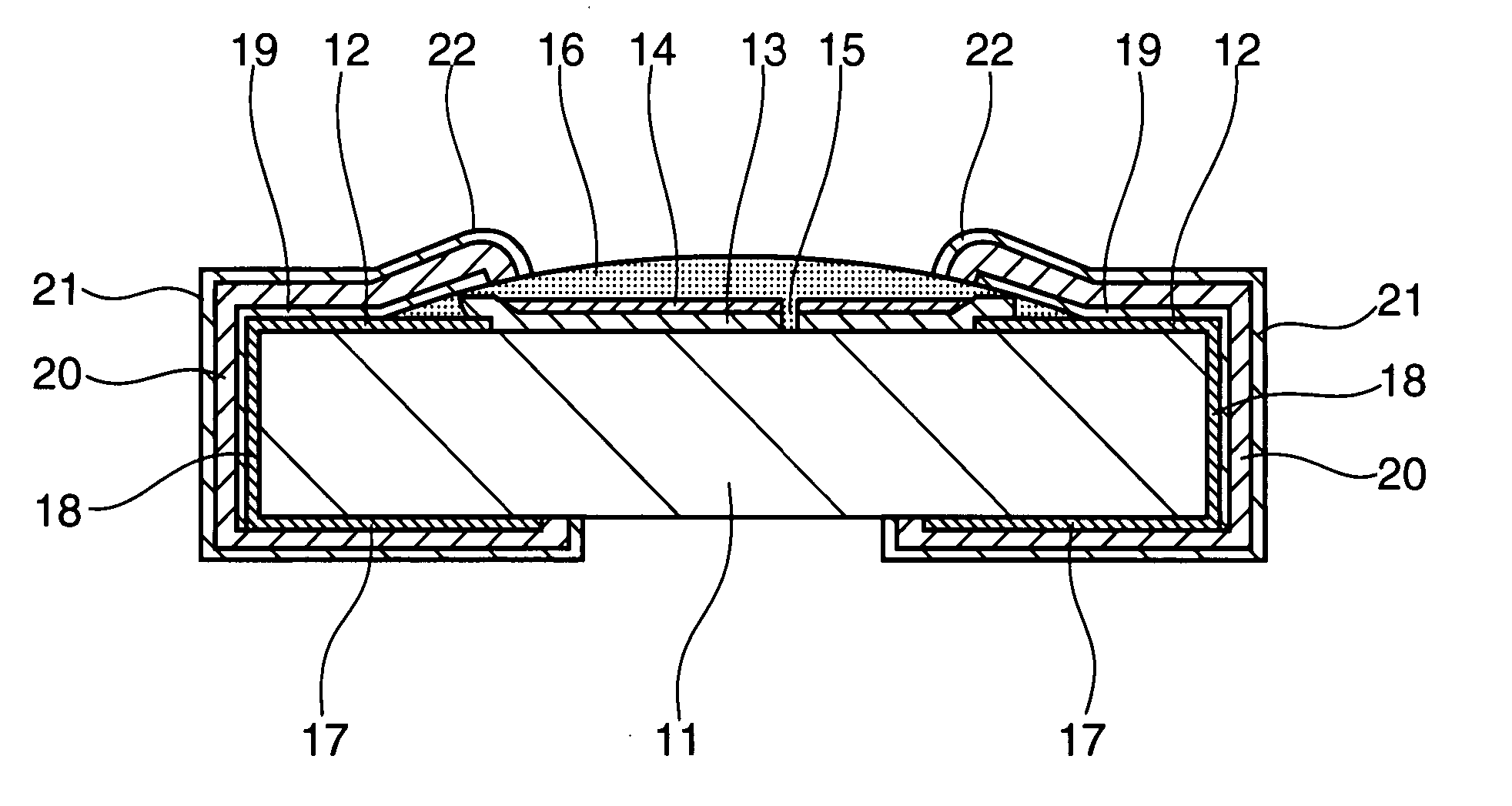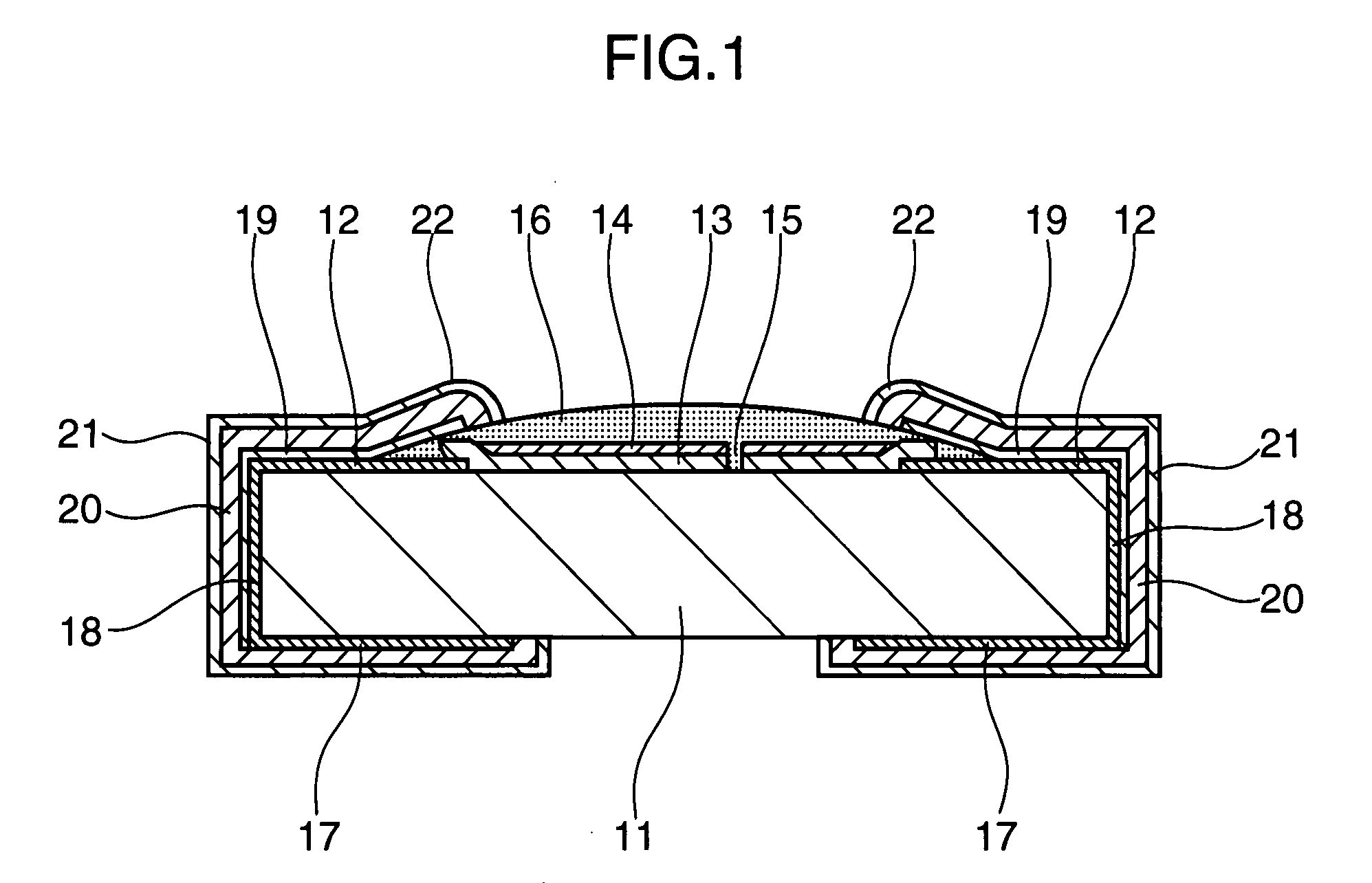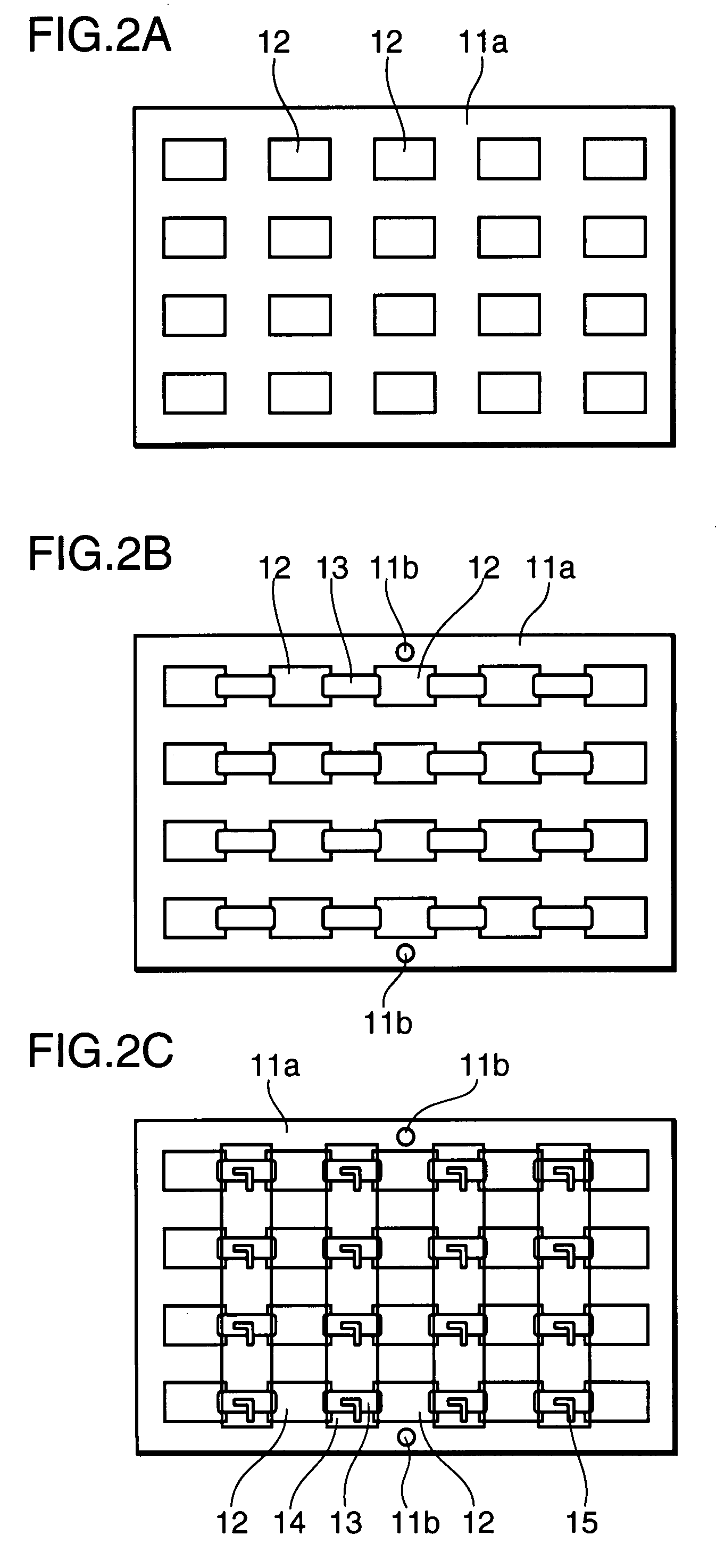Chip-Shaped Electronic Part
a technology of electronic parts and chips, applied in the manufacture of resistor chips, resistor details, resistors, etc., can solve problems such as serious cracks in substrates, and achieve the effect of suppressing cracks in substrates
- Summary
- Abstract
- Description
- Claims
- Application Information
AI Technical Summary
Benefits of technology
Problems solved by technology
Method used
Image
Examples
first embodiment
[0035]FIG. 1 is a cross-sectional view showing a chip resistor, as an example of a chip-shaped electronic part according to the first embodiment of the invention. A substrate 11 is made of ceramics such as fired alumina, and has an insulation property. The thickness of the substrate 11 is decreased, as the size of the chip-shaped electronic part is decreased. For instance, a substrate 11 of a 0603 chip resistor with the outer dimensions of 0.6 mm×0.3 mm has a standard thickness of 0.2 mm, and a substrate 11 of a 0402 chip resistor with the outer dimensions of 0.4 mm×0.2 mm has a standard thickness of 0.1 mm.
[0036] A pair of first upper surface electrodes 12 are formed at widthwise both ends on an upper surface of the substrate 11. The first upper surface electrode pair 12 is made of a gold resinate paste containing gold. A ruthenium-oxide-based resistive element 13 is formed on the upper surface of the substrate 11 in such a manner that both ends thereof are placed over the first u...
second embodiment
[0069]FIG. 6 is a cross-sectional view showing a chip resistor, as an example of a chip-shaped electronic part according to the second embodiment of the invention. A substrate 31 is made of ceramics such as fired alumina, and has an insulation property. The thickness of the substrate 31 is decreased, as the size of the chip-shaped electronic part is decreased. For instance, a substrate 31 of a 0603 chip resistor with the outer dimensions of 0.6 mm×0.3 mm has a standard thickness of 0.2 mm, and a substrate 31 of a 0402 chip resistor with the outer dimensions of 0.4 mm×0.2 mm has a standard thickness of 0.1 mm.
[0070] A pair of upper surface electrodes 32 are formed at widthwise both ends on an upper surface of the substrate 31. The upper surface electrode pair 32 is made of a gold resinate paste containing gold, and has a thickness of about 1 μm. A ruthenium-oxide-based resistive element 33 is formed on the upper surface of the substrate 31 in such a manner that both ends thereof are...
third embodiment
[0097]FIG. 10 is a cross-sectional view showing a chip resistor, as an example of a chip-shaped electronic part according to the third embodiment of the invention. The third embodiment is a combination of the second embodiment and a modification of the first embodiment. Elements in the third embodiment identical or equivalent to those in the second embodiment are denoted at the same reference numerals as the second embodiment.
[0098] Specifically, an upper surface of a protective film 36 is made substantially flat by setting the thickness of a portion of the protective film 36 above a resistive element 33 to 7 μm or less. Also, the thicknesses of a first plated layer 39 and a second plated layer 40 are set so that the height from the upper surface 31 to the upper surface of the second plated layer 40 is in the range from 12 μm to 21 μm, and is larger than the height from the upper surface of the substrate 31 to the upper surface of the protective film 36 i.e. from 10 μm to 14 μm; an...
PUM
 Login to View More
Login to View More Abstract
Description
Claims
Application Information
 Login to View More
Login to View More - R&D
- Intellectual Property
- Life Sciences
- Materials
- Tech Scout
- Unparalleled Data Quality
- Higher Quality Content
- 60% Fewer Hallucinations
Browse by: Latest US Patents, China's latest patents, Technical Efficacy Thesaurus, Application Domain, Technology Topic, Popular Technical Reports.
© 2025 PatSnap. All rights reserved.Legal|Privacy policy|Modern Slavery Act Transparency Statement|Sitemap|About US| Contact US: help@patsnap.com



